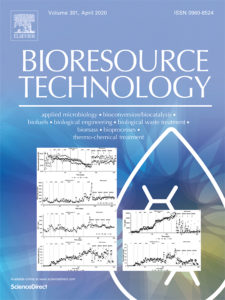Biological strategies for enhanced hydrolysis of lignocellulosic biomass during anaerobic digestion
Biological strategies for enhanced hydrolysis of lignocellulosic biomass during anaerobic digestion
- December 2017
- Peer-Reviewed Articles
- Multiple
 Shretha, S., Fonoll, X., Khanal, S.K., & L. Raskin. (2017). Biological strategies for enhanced hydrolysis of lignocellulosic biomass during anaerobic digestion: Current status and future perspectives. Bioresource Technology, 245A, 1245-1257.
Shretha, S., Fonoll, X., Khanal, S.K., & L. Raskin. (2017). Biological strategies for enhanced hydrolysis of lignocellulosic biomass during anaerobic digestion: Current status and future perspectives. Bioresource Technology, 245A, 1245-1257.
ABSTRACT: Lignocellulosic biomass is the most abundant renewable bioresource on earth. In lignocellulosic biomass, the cellulose and hemicellulose are bound with lignin and other molecules to form a complex structure not easily accessible to microbial degradation. Anaerobic digestion (AD) of lignocellulosic biomass with a focus on improving hydrolysis, the rate limiting step in AD of lignocellulosic feedstocks, has received considerable attention. This review highlights challenges with AD of lignocellulosic biomass, factors contributing to its recalcitrance, and natural microbial ecosystems, such as the gastrointestinal tracts of herbivorous animals, capable of performing hydrolysis efficiently. Biological strategies that have been evaluated to enhance hydrolysis of lignocellulosic biomass include biological pretreatment, co-digestion, and inoculum selection. Strategies to further improve these approaches along with future research directions are outlined with a focus on linking studies of microbial communities involved in hydrolysis of lignocellulosics to process engineering.




